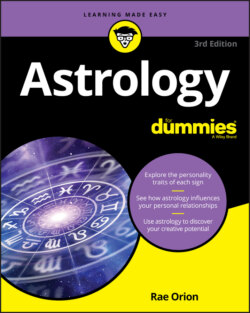Читать книгу Astrology For Dummies - Rae Orion - Страница 51
DANTE’S INFERNO
ОглавлениеThe Italian poet Dante Alighieri (c. 1265 to 1321) has a fine time in his Inferno punishing wrong-doers. As he travels through the nine circles of hell with his imaginary guide, the Roman poet Virgil, he observes souls in torment everywhere — the lustful, the gluttonous, the wrathful, the misers, the thieves, and so on. They are all being tortured in hideous, imaginative ways — and the punishment always fits the crime. In the eighth circle Dante finds two astrologers, weeping. They are Guido Bonatti (c. 1207 to c. 1296), the foremost astrologer of the age, and Michael Scot (1175 to 1234), a Scottish astrologer who worked for popes and emperors and, according to Dante, “truly knew the game of magic fraud.” Their heads are twisted backwards; having tried to peer into the future, they can now only look behind them.
But Scot and Bonatti may have been stand-ins for the astrologer who really got under Dante’s skin: Cecco d’Ascoli (1257-1327), a professor of astrology at the University of Bologna who criticized Dante’s use of fictional devices and sought to “correct” Dante’s literary errors with a poem of his own while simultaneously trying to strike up a correspondence with him. Although D’Ascoli worked for Pope John XXII, he had ideas that did not sit well with the church, as a result of which he was put on trial for heresy and instructed not to teach. He failed to get the message. A few years later, teaching once again, he cast a horoscope for Jesus Christ, thereby implying that the stars, rather than God, controlled Christ’s fate. For this, he was burned at the stake, the only astrologer and the first university professor to be so punished.
Astrology fully infiltrated medieval life. When the Black Death raced across Europe in 1348, wiping out at least a third of the population, the King of France asked the medical faculty at the University of Paris to look into it. They soon determined that the bubonic plague was a result of a spectacular conjunction of Jupiter, Saturn, and Mars in March 1345. A lunar eclipse that same month only heightened the cosmic malevolence. Although people had other theories about the cause of the plague, this one made the most sense and was widely accepted, even if the conjunction preceded the plague by a full three years. The doctors had diagnosed the problem.
In the centuries that followed, astrology permeated every corner of society, and every castle. At times there was controversy. Astrologers were feted by some and condemned by others. They consulted with popes and kings, chose propitious times for battles and coronations, were caught up in royal scandals, debated with theologians and philosophers, were knighted, and once — in England in 1441 — drawn and quartered. But that unfortunate astrologer had cast a chart that foresaw the death of the king. In other words, he had committed treason.
